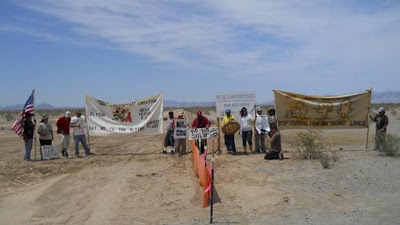Wise Words
Chris Clarke at Coyote Crossing recently published a great piece on KCET looking at what we will lose when the majestic Carrizo Plain is industrialized for the sake of large-scale renewable energy projects. While writing the piece he came across a passionate letter written by long-time public servant and friend of the environment Peter Douglas, who recently retired from the California Coastal Commission. Mr. Douglas wrote the letter urging policymakers to reconsider plans to build massive solar power projects in Carrizo Plain, which will threaten endangered species in an area called "California's Serengeti". You can read the full letter on the Carrizo Commons website , but I've included some particularly inspiring excerpts below. I sense in pockets of our political, economic and civic world of leaders, a need to be seen as progressive facilitators and not as obstructionists in the way of new centralized industrial development of renewable energy. This is ...

